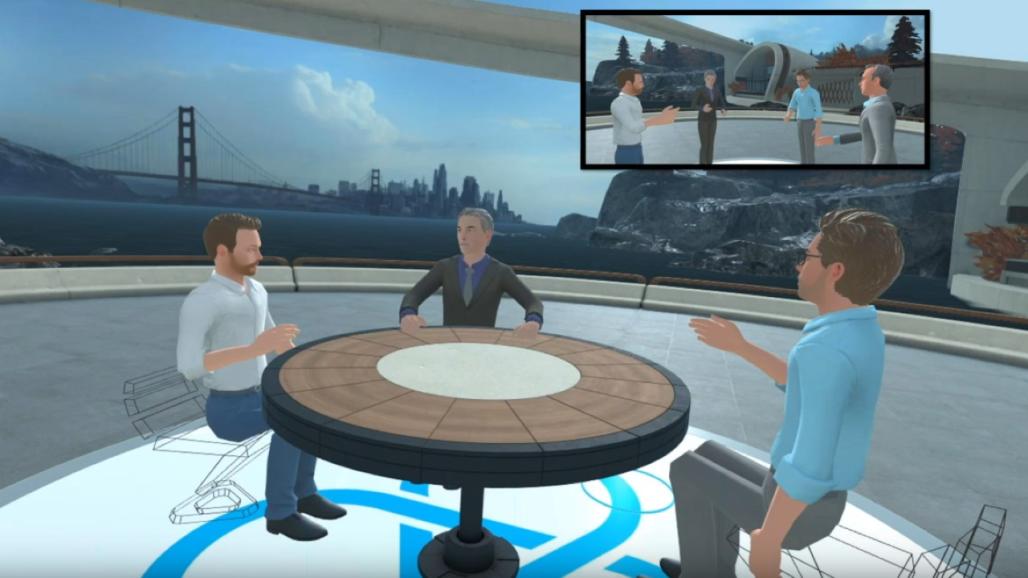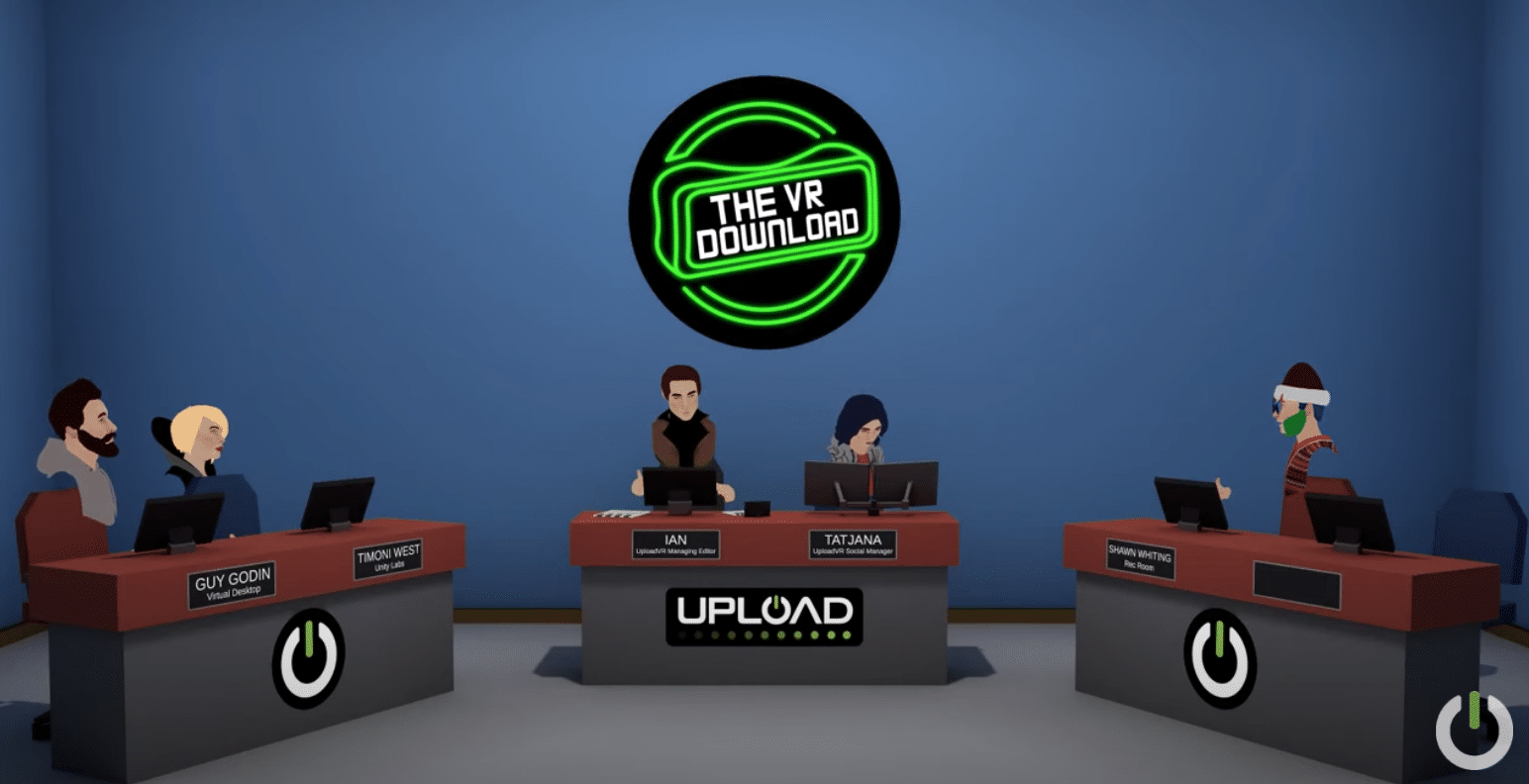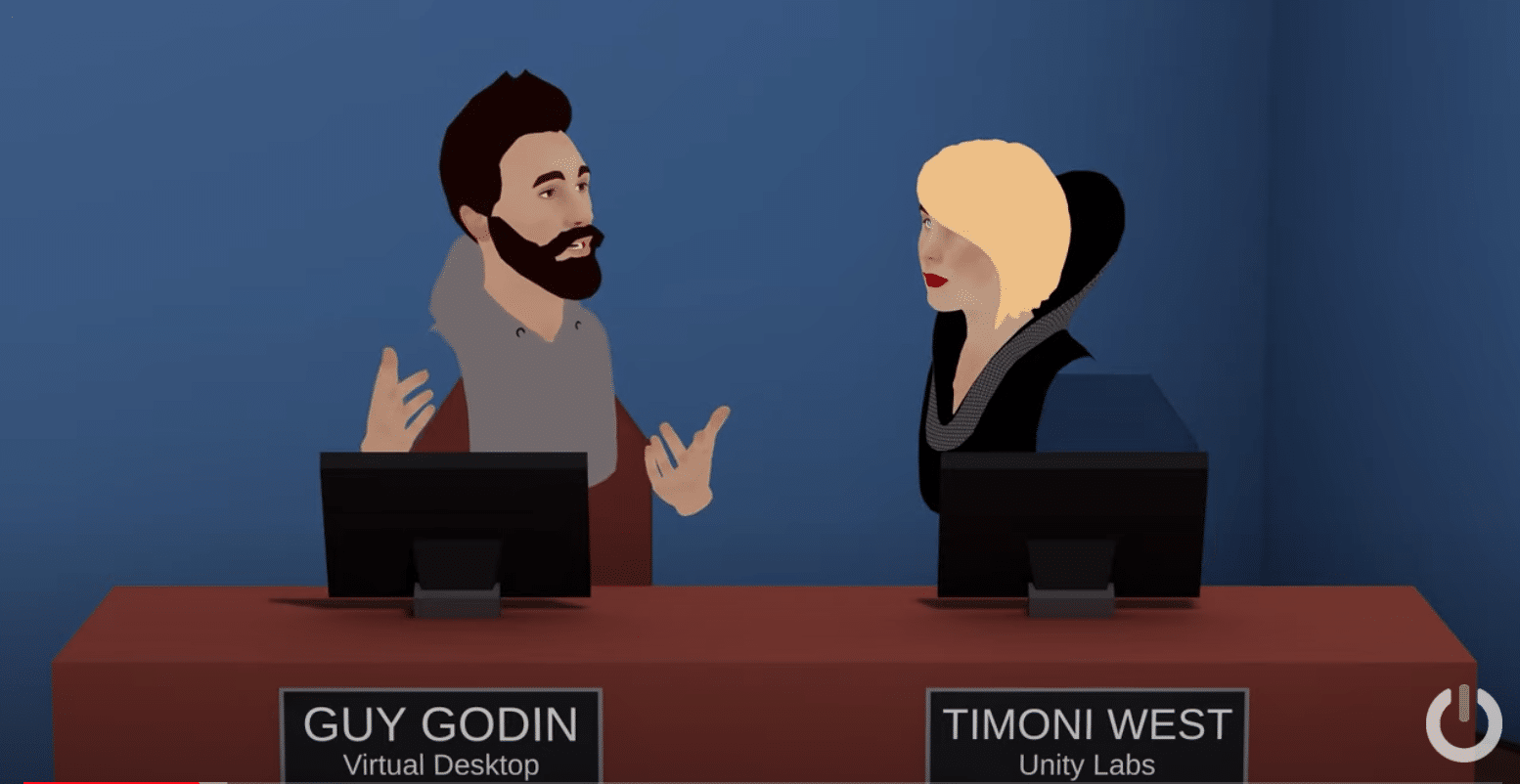
XR Talks is a series that features the best presentations and educational videos from the XR universe. It includes embedded video, as well as narrative analysis and top takeaways. Speakers’ opinions are their own.
With tens of millions of knowledge workers under shelter-in-place orders, working from home (#WFH) is a prominent component of the “new normal.” Though there are far worse trials such as those faced by hospital workers and actual virus victims, #WFH has been a challenge for many.
Through all this, a question raised within spatial computing circles is how can immersive technology support remote knowledge workers? This has been the topic of many roundtable discussions, two of which we cherry-picked for this week’s featured XR talk (videos below).
A common image these days is the Brady Bunch-style brickwork of faces on Zoom calls. Though Zoom is convenient in terms of joining meetings, it lacks the production quality and fidelity required for true human connection. Even its digital backdrops are shoddy and track poorly.
On the other side of the spectrum are collaborative VR apps. They range from fun and social (VRChat, Rec Room) to business (Vive Sync) to areas in the middle (Altspace). In any case, VR holds far greater capabilities than video calls according to HTC’s David Sapienza in his recent talk.
“Bringing you into physical proximity with another person: that actually has the biggest impact. We all know this. I’m not going to say that virtual reality is the panacea. You’re never going to not need to meet people… But if you can’t or you are remote, VR is the next best thing versus being right there.”

Not so Fast
But there are issues and roadblocks that prevent VR meetings from achieving Zoom-like ubiquity. This is a lesson in convenience and compatibility winning over quality. One example we often point to is the illogical ubiquity of Apple’s low-quality, infuriating and knot-prone wired earbuds.
What are those “issues and roadblocks” for VR? This was one topic batted around in a recent Upload roundtable on the new dynamics of working from home. And bonus points go to Upload for eating their own dogfood and holding the discussion — as they normally do — in VR.
At a very foundational level, one issue is hardware ubiquity, according to Unity Labs’ XR Research Lead Timoni West (see our past interview). If it says anything about that broad challenge, even Unity — a very VR-forward company — lacks internal VR penetration.
“I think my team might be the only team at Unity where every single person owns a headset and the final person who didn’t have one was one of our 3d artists that just got one last week. I don’t know many companies in the world where every single person has access to VR hardware.”

It Depends…
This is one reason why cross-platform support is important. Though it lessens the experience, the ability to join on desktop or mobile is a necessary evil at this early stage. Spatial does this, as does Rec Room which works on desktop (Steam) and iOS, said Shawn Whiting on the panel.
It also depends on the type of meeting intended, West says. For team-building meetings or Friday happy hours, getting everyone together in Rec Room is great. But for sensitive meetings that require nuances of non-verbal communication, or anything that requires typing, VR can fall short.
Another issue is headset comfort says Virtual Desktop’s Guy Godi. In all of the above scenarios, the thought is that VR is entered periodically in a given workday to join meetings or immersive sessions with colleagues. But we’re far from hardware that’s conducive to longer stretches.
“I think the comfort of the headset has to improve a lot for remote work to be viable in VR or in AR. Right now, we put those on our head and it gets hot and it’s not possible for a long time. I think once we have things that are closer to what glasses are, I think we’re going to see exponential growth in VR. The software will get better obviously, but I think comfort is the biggest problem right now.”

Activation Energy
Meanwhile, HTC is working out some of the kinks on software levels. It recently launched the aforementioned Vive Sync, which is purpose-built for knowledge workers to meet in VR. Sapienza contends that VR’s advantages include the participant focus that’s inherent with immersion.
HTC is also working on other aspects of the experience to reduce friction. VR has enough activation-energy as it is, so Vive Sync attempts to counterbalance that with tools that let you save meeting takeaways to the cloud, and to make information retention and retrieval easier.
“Since you’ve already synchronized a file to this meeting room, when you’re done, all your screenshots, all your notes are going to automatically be sent back to that folder so there’s no frantic pressure to take off the headset and quickly write up all your notes or to transfer those files. It’s already night back on your PC. So it’s about getting into the meeting, having it quickly do what you got to do, and get out […] We put a lot of emphasis on the approachability.”
Fertile Ground
Lastly, the current period of global lockdown will have longstanding cultural impact on how we live and work. One lasting effect according to West could be greater cultural acceptance of remote work, after it’s been proven to work for some. And that could provide more fertile ground for VR.
“A lot of managers who aren’t comfortable with the notion of working from home right now have a hard lesson to learn, where they see people continue to work even if they’re not around. They’re really going to have a mental shift, and I can’t imagine that won’t percolate over the next five years, and we’ll see people more casually working from home as infrastructure is built up, as we fill the gaps in, and as people get kind of used to this concept […] Just thinking about how this mass transit that we force on employees every day: that might not be necessary. If we’re forced to stop doing it for a month, I think that’s really going to have ramifications about what work looks like in ten years.”
See the full Upload presentation below, and the Vive Sync presentation embedded further above.
For deeper XR data and intelligence, join ARtillery PRO and subscribe to the free AR Insider Weekly newsletter.
Disclosure: AR Insider has no financial stake in the companies mentioned in this post, nor received payment for its production. Disclosure and ethics policy can be seen here.
Header image credit: Upload, YouTube
